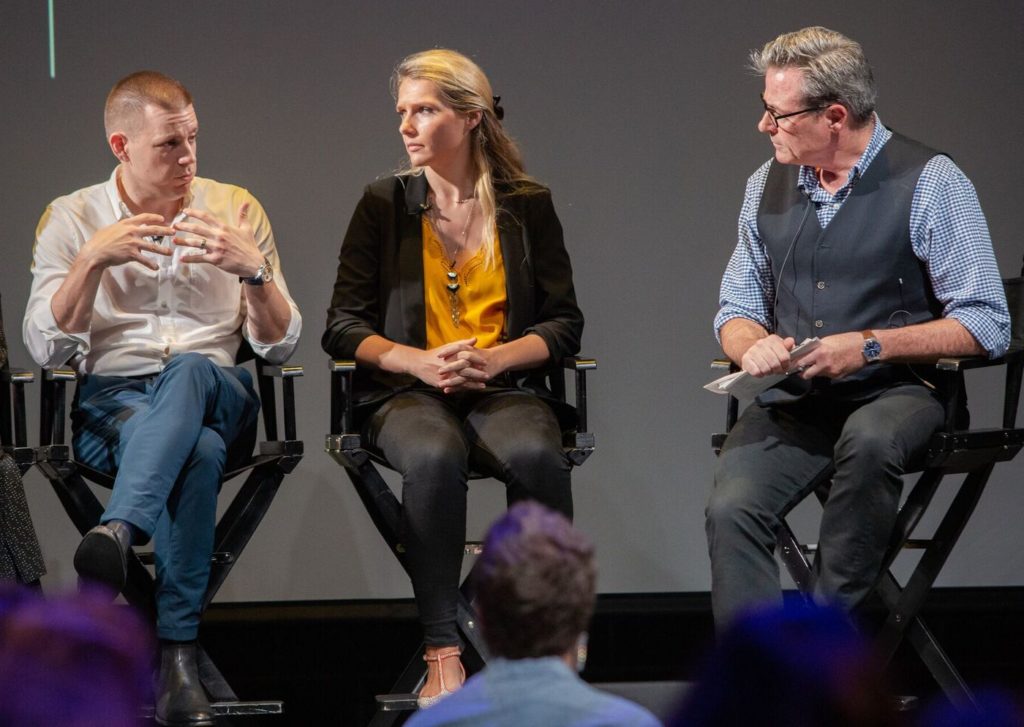“Listening is an art form,” said Laura Davis Gross, senior vice president of marketing for Wanderlust, the yoga-and-mindfulness brand. In the age of social media, though, with seemingly infinite data giving companies many new ways to hear customer feedback, the practice now requires less sitting in silence and a more dynamic kind of hearing on many platforms.
That was the message from Gross and her fellow speakers on a panel titled “Hearing What Your Customer Wants” at the From Day One conference in Brooklyn this week, co-produced by The Bridge. “We measure so many things,” said Amy Hall, VP of social consciousness for Eileen Fisher.
For a good brand, being adept at hearing customers in 2018 means the ability to parse oceans of data not only for individual metrics, but also for the larger conversation. “Brands these days should not only care about how people talk about them,” said Steve Kuyan, managing director of the NYU Tandon Future Labs, but also what people talk about in conversations about similar brands.
Brands need to decide “which story is going to resonate most with the customer,” said Amy Hall, third from left, VP of social consciousness for Eileen Fisher
When digital agency Big Spaceship’s SVP of social media, Victor Pineiro, mines feedback for a client like Hasbro, for instance, he thinks bigger than the company-specific information and asks questions like, “How does [social-media feedback] mention the way the world is playing right now?” With so much online conversation available, it would be a waste not to tap into it for a fuller view of the landscape.
Machine learning and AI bring a wealth of information to companies’ fingertips, but all that information requires targeted sifting. Understanding what to look for is both a skill and a sign of a company’s vision. The brands that are doing it right not only know themselves, but their customers too, and are able to accomplish an alignment of the two, said Gross.
Even though technology gives companies more powerful ways of gathering vast troves of data, it’s important to bring a focused response. “People tune in to the one thing,” said Hall, emphasizing that companies have only a finite amount of time to articulate a narrative. Brands need to decide “which story is going to resonate most with the customer,” she said.
The From Day One conference drew more than 300 participants to BRIC House in Downtown Brooklyn
Moderator Damian Slattery, VP of marketing for Fast Company, asked the panelists to analyze how corporations maintain a sense of purpose, inwardly and outwardly. Pineiro spoke of what he calls “performative wokeness,” an awareness of public issues, especially around social justice. Nike may be a good recent example, evidently having a good ear for how its customers feel when it decided to take a gamble on Colin Kaepernick.
Lately, the public is skeptical not only about corporate intent but also the channels that businesses use to communicate. “Trust is eroding for brands and the platforms social messages are on,” said Pineiro. To be judged authentic, he said, brands need to be at once clever, human and trustworthy in their communication, from Twitter replies to Facebook messages.
While some brands have wokeness in their DNA, others have to work harder to achieve it. There is an “ebb and flow of purpose,” Pineiro went on. It occurs both inside and outside a company, and paying attention to the cycle is vital to a business.
Companies have to respond quickly to feedback these days, but the long view is still important. “Our own existence is kind of a metric,” said Myriam Coneim, director of sustainability for American Express, pointing out that a company’s survival is never a given.
American Express has been around for 168 years. In that time, while much has changed in society, the company’s core values have remained constant, said Coneim. The company’s “notion of service,” she said, “has always been a pillar of the business and a key part of its continued success,” adding that American Express has 30,000 employees who are tasked with listening to customers in some way. “We have a lot of ways they can send us feedback.”
